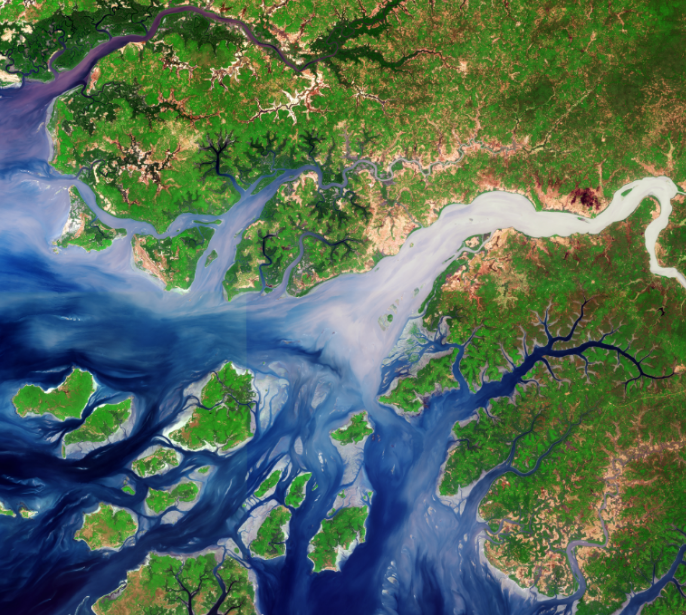AWS Public Sector Blog
Tag: earth observation data
33 new or updated datasets on the Registry of Open Data for Earth Day and more
The AWS Open Data Sponsorship Program makes high-value, cloud-optimized datasets publicly available on AWS. Through this program, customers are making over 100PB of high-value, cloud-optimized data available for public use. As April 22 is Earth Day, the AWS Open Data team wanted to highlight some new datasets from our geospatial and environmental communities of practice, as well as the other new or updated datasets available now on the Registry of Open Data on AWS and also discoverable on AWS Data Exchange.
AWS successfully runs AWS compute and machine learning services on an orbiting satellite in a first-of-its kind space experiment
At re:Invent 2022, AWS announced that it successfully ran a suite of AWS compute and machine learning (ML) software on an orbiting satellite, in a first-of-its-kind space experiment. The experiment, conducted over the past 10 months in low Earth orbit (LEO), was designed to test a faster, more efficient method for customers to collect and analyze valuable space data directly on their orbiting satellites using the cloud.
Nara Space uses AWS to improve satellite image quality up to three times with deep learning
Nara Space Technology is a South Korea-based startup that builds nano satellite constellations and provides satellite data services to let customers quickly identify and address issues like changing climate conditions and disaster recovery to improve life on Earth. Nara Space provides solutions for nano satellite and small spacecraft system design, integration, development, and testing; enables satellite data analytics based on deep learning; and improves the visual quality of standard satellite imagery with its Super Resolution core technology. To do this, Nara Space uses AWS for secure, flexible, scalable, and cost-efficient cloud solutions.
OpenFold, OpenAlex catalog of scholarly publications, and Capella Space satellite data: The latest open data on AWS
The AWS Open Data Sponsorship Program makes high-value, cloud-optimized datasets publicly available on AWS. Our full list of publicly available datasets are on the Registry of Open Data on AWS and are now also discoverable on AWS Data Exchange. This quarter, we released 15 new or updated datasets including OpenFold, OpenAlex, and radar data from Capella Space. Check out some highlights from the new or updated datasets.
How African leaders use open data to fight deforestation and illegal mining
In Africa, scientific data is critical to helping the nation’s leaders tackle issues like water scarcity and climate change. A collaboration between nonprofit Digital Earth Africa (DE Africa) and the Amazon Sustainability Data Initiative (ASDI) is helping them access the data they need. DE Africa operates a free and user-friendly Earth observation (EO) data service that provides African policymakers with insights into a range of challenges, from natural resource management to the impacts of climate change. The service has already helped Ghanaian officials identify and tackle illegal mining, and provided decision-ready insights on flooding and drought in Tanzania and Nigeria.
AWS and OSTIn sign Statement of Strategic Intent to expand Singapore’s emerging space and technology environment
Singapore’s national space office, the Office for Space Technology and Industry (OSTIn), and Amazon Web Services (AWS) today announced they have signed a Statement of Strategic Intent and Cooperation. This Statement is the first of its kind for AWS in Asia, and will help support Singapore’s focus on space as a potential new industry for economic growth and technology development. The Statement between AWS and OSTIn outlines specific areas of collaboration designed to foster the development of space technologies and support the creation of a vibrant, sustainable, and innovative space hub in Singapore.
Satellogic makes Earth observation data more accessible and affordable with AWS
Satellogic, a leader in high-resolution Earth observation (EO) data collection, is creating a live catalog of Earth and delivering daily updates to create a complete picture of our planet for decision makers so that they can tackle some of the biggest challenges of our time. Satellogic uses Amazon Web Services (AWS) to scale its live Earth catalog, enhance customer experiences, decrease data processing times, and optimize costs.
The true value of Earth Observation data…now
A picture of our entire Earth’s surface is taken every day. Such a possibility—or even the concept—would have seemed unfeasible and unaffordable just ten years ago. With continued technology improvements, we are witnessing a rapid increase in the number of miniature satellites capturing Earth observation (EO) data. This data is now accepted by many industries including agriculture, insurance, utilities, and urban planning to deliver actionable insights.
BlueDot Observatory – keeping an eye on our planet’s water resources
Managing water crises is one of the Sustainable Development Goals and the decline in the available quality and quantity of fresh water is ranked as one of the top ten most serious societal risks by the World Economic Forum’s 2018 Global Risks report. Using satellite imagery available through the AWS Open Data Program and the AWS Cloud, BlueDot Observatory is establishing a global monitoring system for all at-risk water bodies. This monitoring reveals a sad truth – the total loss of water bodies is in the not too distant future.
We invited Anze Zupanc, a data scientist who manages the BlueDot Observatory at Sinergise, to share how the AWS Open Data Program and the Amazon Sustainability Data Initiative support this work.
Apply for AWS credits to build Earth observation applications that support environmental and development goals
To help countries realize the potential of Earth observations for sustainable development, we are teaming with the Group on Earth Observations (GEO) to provide $1.5 million worth of cloud services for projects that improve understanding of our planet. Eligible government agencies and research institutions can apply for up to $100,000 of AWS Promotional Credits to build Earth observations applications that support environmental and development goals, including the Sendai Framework for Disaster Risk Reduction, the Paris Agreement and the United Nations Sustainable Development Goals.









